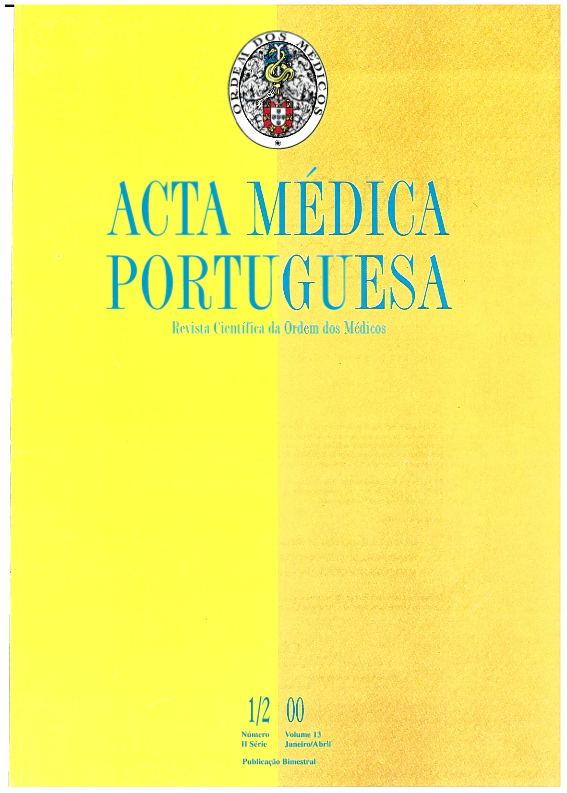Leprosy. Comparative study of old and new patients.
DOI:
https://doi.org/10.20344/amp.1766Abstract
Leprosy represented, until a few decades ago, an important public health problem in mainland Portugal. According to the data of the General Directorate of Primary Health Care, the incidence and prevalence rates of the disease have been decreasing progressively and in a significant way during the last years. In view of the fact that it is an endemic disease in regression, we decided to estimate if there were significative changes in the clinical manifestations of the new cases. Therefore, we carried out a comparative study based on the clinical data of 18 patients (13 males and 5 females) with Leprosy who were being followed up in the Dermatology Clinics of Coimbra University Hospital. We differentiated two groups: patients with the diagnosis of the disease before 1990 (old patients), and those diagnosed after 1990 (new patients). The first group had only 8 subjects while the second group had the other 10. We recorded the patients' age, sex, nationality and residence, age at the onset of the disease, number of cases that began before the age of 20, clinical manifestations (according to Ridley and Jopling's classification), and the presence of incapacity determined by the consequences of the disease. We carried out the Student's-t test to appreciate some of the study parameters. We verified that the old patients were on average 11 years younger than the new patients. Leprosy in new patients occurred 11 years later than in the old patients and this difference was statistically significant after the Student's-t test (p < 0.05). Almost one half of the new cases (4 patients in 10) were possible cases of leprosy brought from Brazil, while all the old individuals had an autochthonous origin. The multibacillary forms were predominant in both groups, representing 89% of all patients. The frequency of handicaps was similar in both groups. Although it is based on a small number of patients, our study suggests that the clinical and epidemiological manifestations of leprosy have been changing significantly in the last years and that the changes observed in the form of presentation of the new cases are consistent with the present epidemiological situation. Our study also seems to suggest an increase in the importance of leprosy imported by immigrants from leprosy endemic countries. We point out that this phenomenon, as in the case of AIDS, can theoretically create the conditions for a recrudescence of leprosy, as currently observed with tuberculosis.Downloads
Downloads
How to Cite
Issue
Section
License
All the articles published in the AMP are open access and comply with the requirements of funding agencies or academic institutions. The AMP is governed by the terms of the Creative Commons ‘Attribution – Non-Commercial Use - (CC-BY-NC)’ license, regarding the use by third parties.
It is the author’s responsibility to obtain approval for the reproduction of figures, tables, etc. from other publications.
Upon acceptance of an article for publication, the authors will be asked to complete the ICMJE “Copyright Liability and Copyright Sharing Statement “(http://www.actamedicaportuguesa.com/info/AMP-NormasPublicacao.pdf) and the “Declaration of Potential Conflicts of Interest” (http:// www.icmje.org/conflicts-of-interest). An e-mail will be sent to the corresponding author to acknowledge receipt of the manuscript.
After publication, the authors are authorised to make their articles available in repositories of their institutions of origin, as long as they always mention where they were published and according to the Creative Commons license.









